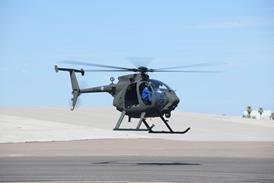Guy Norris/LOS ANGELES
Team members from the General Electric-Pratt & Whitney Engine Alliance began installation studies with Airbus Industrie on 18 December aimed at finalising a firm engine configuration for the A3XX by as early as the first quarter of 1998.
"I would like to have a firm configuration by April," says Bruce Hughes, the newly appointed president of the Alliance, which is competing against Rolls-Royce, with its Trent 900, for the new application. The thrust range of the GP7000 family has also subtly shifted down a notch to reflect the refined power requirements of the A3XX and Boeing 747-400X, a proposed 545,000kg maximum take-off weight derivative. The GP family is now aimed at 302-356kN (68,000-80,000lb)-thrust, compared with the original target of 311-378kN. "We got approval from the Federal Trade Commission and European Commission to go for those two applications only, so I don't think it will change much," says Hughes.
The overall configuration of the engine is generally unchanged from the GP7176 first offered by the Alliance in 1996 for the747-500X/600X, but with some notable differences. GE will still supply the core which now consists of a nine-stage high-pressure (HP) compressor, instead of the original ten-stage unit.
"The turbine [two-stage HP] still looks like the GE90, and Pratt & Whitney will provide the fan section [based on that of the PW4084] and low-pressure system, based on the PW4168. The only thing we're looking for is a reduction in shop costs. We have just to keep those down," says Hughes.
The Alliance also reveals for the first time that P&W is studying an alternative, lower-cost, fan for the engine rather than relying on the wide-chord blade technology of the PW4084. The new study is called the advanced-technology blade (ATB) and, surprisingly, represents a swing back to shrouded blades from wide-chord technology. Hughes says that the ATB faces "stability issues", but if developed satisfactorily it would provide some cost benefits.
GE-P&W is keeping time with the original Airbus A3XX timetable, but recognises that some slippage could occur. "We'll keep to the same schedule, and start detailed engine design in the second quarter of 1999. We will push that out another six months, if needed," adds Hughes.
The Alliance is using the appointment of Hughes as a statement of its commitment to the future. "It's clear that Airbus is serious about the A3XX, and we've got to show people we're still in the game," says Hughes, who has replaced the company's late president, Larry Scott.
Source: Flight International























